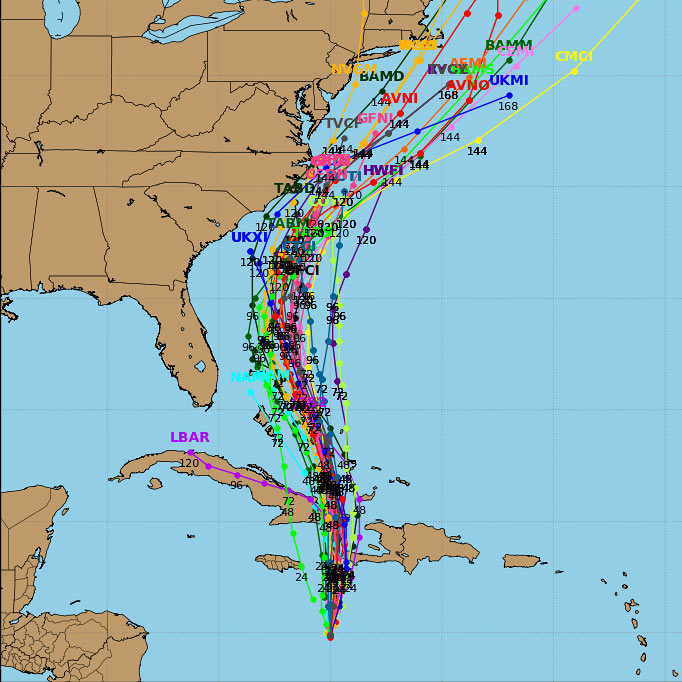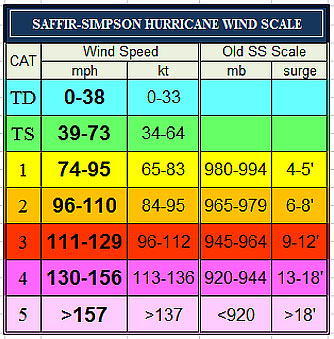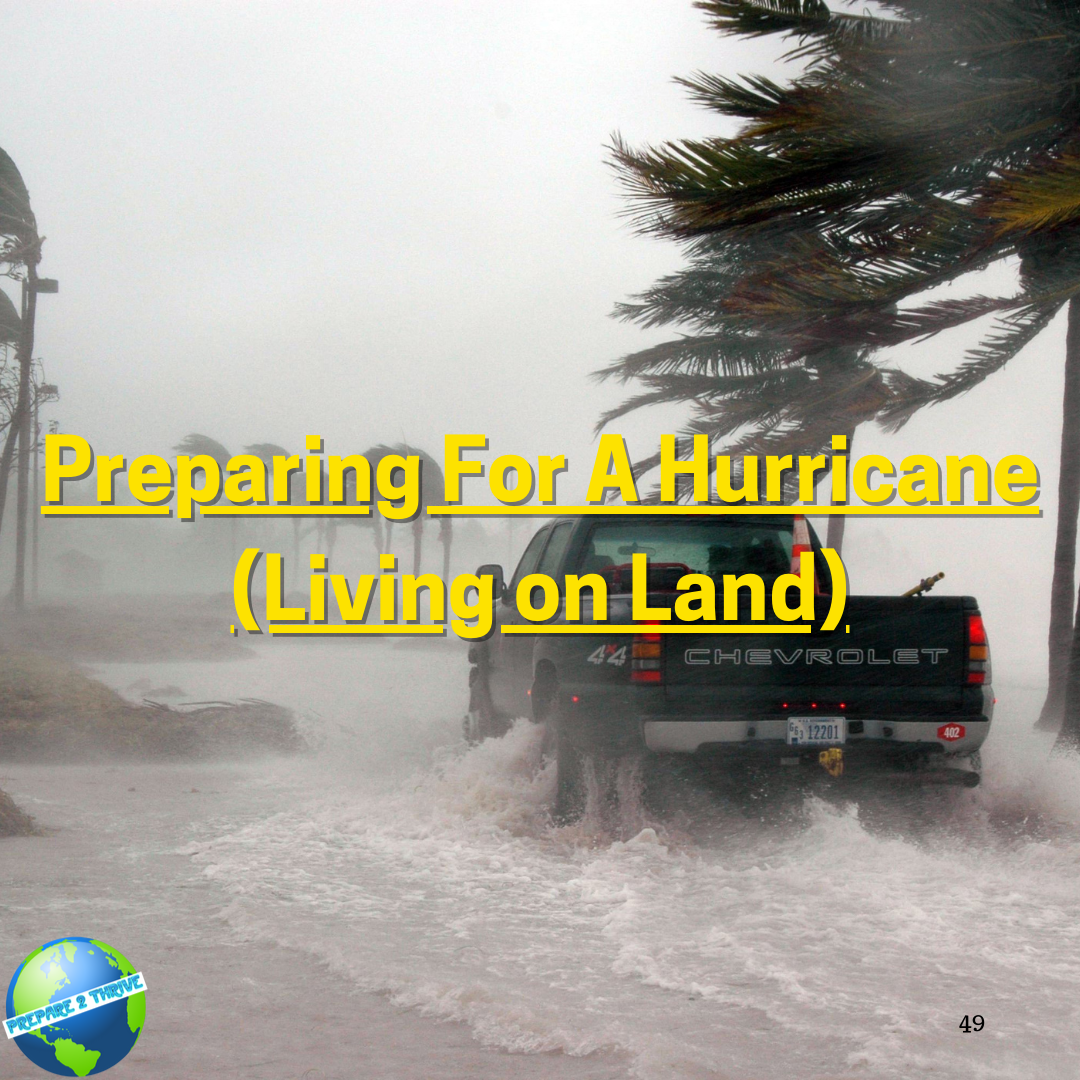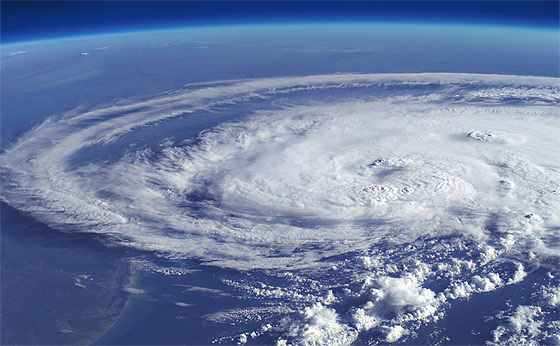How To Prepare For A Hurricane
![Hurricane from Space]() Beyond Just Flashlights And Batteries
Beyond Just Flashlights And Batteries
How often have you heard this ‘typical’ recommendation (from ‘.gov’)?
"For emergency preparedness keep a disaster supply kit containing 72 hours of food & water, a flashlight with extra batteries, a battery powered radio, and a First Aid Kit."
While those preps are simply logical, it seems ridiculous to even have to suggest them (who doesn’t already have a flashlight in their home?). What’s worse, it may be portrayed that these ordinary preps are adequate to weather the storm (hurricane?)! Really?
Here are a few recommendations to help make better decisions and judgements during a time when there’s a hurricane in the forecast:
Think “spaghetti”.
Hurricane Spaghetti Models
Know the forecast. The number one thing to do while preparing for a hurricane is to know the forecast. You may have seen this before while watching a hurricane forecast or update - the so called ‘spaghetti’ hurricane model tracks:

(This morning’s spaghetti model for Hurricane ‘Mathew’)
Each one of the ‘spaghetti noodles’ represents one of the global forecast models. Sometimes a model will include a dark black ‘average’ plot for all of the forecast tracks for the hurricane. These models clearly indicate the possibilities or likelihoods of where the hurricane is going. In total they comprise a fairly accurate representation of future reality. They become a bit less accurate the further out in time for the prediction period.
You can find these spaghetti plots/charts/models by searching the web.
Latest Hurricane Tracks:
http://www.tropicaltidbits.com/storminfo/14L_tracks_latest.png
Note: There is also a commonly seen ‘cone projection’ which is often fairly wide. This is a ‘dumbed-down’ visualization often used in forecasts to the public. I like the ‘spaghetti’ better…
With this knowledge in hand, you will have a better idea where the upcoming hurricane might (probably) go, and whether or not you might be in the path or nearby…
------------
Best Weather Radio
------------
Media Hype
Not to downplay the dangers of a hurricane, but the mainstream news (and weather) media often hype up a storm into Armageddon, or they may imply landfall projections that simply are not very accurate. With that said, even the super-computers can get it wrong, so don’t ever let your guard down - just use common sense by keeping in touch with the models for any surprises… I’m just pointing out that if you do some of your own due-diligence that you will be better armed with information for your own decision making.
Hurricane Force Winds
While the entire field of a hurricane is windy, the hurricane force winds are concentrated around the core. The diameter of the hurricane force wind field will vary from one hurricane to another however ‘typically’ they average about 100 miles across. Tropical Storm force winds may range out farther - perhaps up to 300 miles from the core - depending.
With that said, the winds within the entire field of a hurricane can cause damage, while the winds around the core can cause tremendous damage. Again, your proximity to the forecast core (or eye) is crucial. When you see the satellite image of the hurricane on TV, it doesn’t mean the entire area underneath will be devastated. In fact it’s a comparatively small core (again - not to downplay, but just saying…).
The Saffir-Simpson Hurricane Wind Scale
Description: NOAA.gov Saffir-Simpson Hurricane Wind Scale
Storm Surge Flooding
Your geographical location to the coast is one of the most important considerations while preparing for a hurricane. Obviously if you live on, or very near the coast, AND if the hurricane projections are pointing towards your area, you best simply get out. Storm Surge is what kills more people than hurricane winds.
A small CAT-1 hurricane may have a storm surge of 5-feet while a CAT-5 may be 18-feet or higher. Either way, water rushing inland will destroy homes right quick. Enough said…
You know who you are…
You are going to lose power
Plan on it. If you are within the tropical-storm wind field of hurricane, or most definitely if you’re within the hurricane core wind field, trees are going to fall on power lines and you will likely lose power. If you have chosen to stay put, you better plan for a period of time without electricity. Do you have a generator and do you know how to connect it to your critical systems in your home? Do you have enough fuel? Plan accordingly.
Pack Up The Vehicle
If you have been watching the weather forecasts and if it looks like the hurricane spaghetti models are bringing it near where you live, one of the best proactive measures that you can take is to pack up your vehicle as though you are going to bug out. If you later choose not to bug out, due to the hurricane’s actual track, well it’s no big deal to unpack. However if you do have to bug out, you will be glad that you prepared!
Think about what you should pack. You have limited space in your vehicle, so make good use of it. The good thing is that all you have to do is drive far enough away to be in a safe region. Probably no need to pack a ton of food (but enough food and water for ‘just in case’) - which should always be part of your vehicle’s 72-hour kit anyway.
The things you take with you are up to you and your situation. If you are in a high-probability impact zone, you might not be able to return to your home (which will likely be damaged) for awhile (several days, a week? longer?). So take extra clothes and other such items as though you’re going on a vacation…
CONCLUSION
That said, the primary purpose of this post is not to list a hundred items to have for a hurricane, but to encourage you who live in hurricane prone areas to pay closer attention to the actual weather data and forecasts. Arm yourself with knowledge so as to make better decisions. Don’t necessarily fall for the mainstream hype (they may or may not be accurate). Be smart, and if it looks like you’re in the path of the hurricane’s core, then simply get out. Don’t wait until the last 24 hours to do it. 48 hours is better.

 Beyond Just Flashlights And Batteries
Beyond Just Flashlights And Batteries
